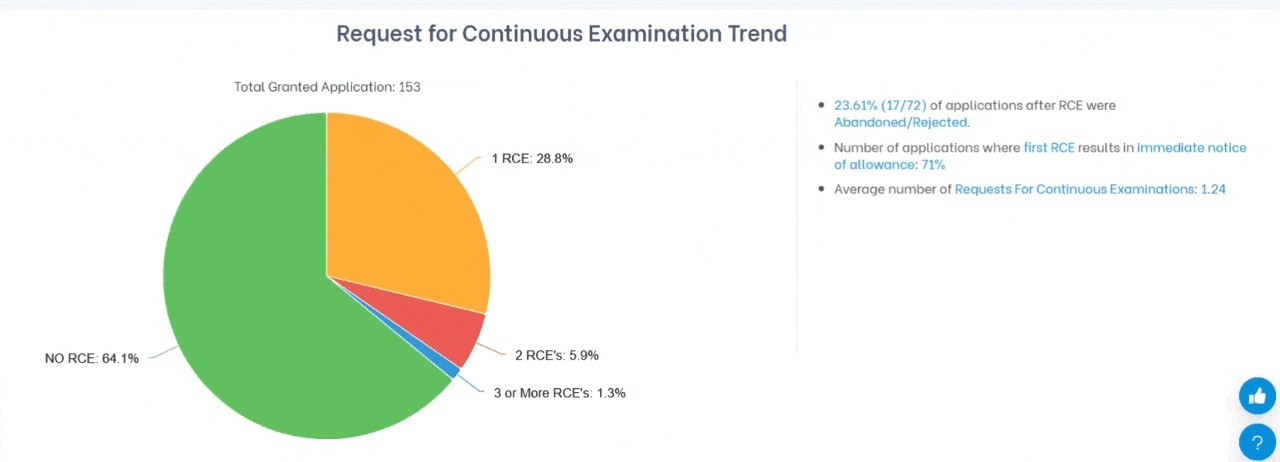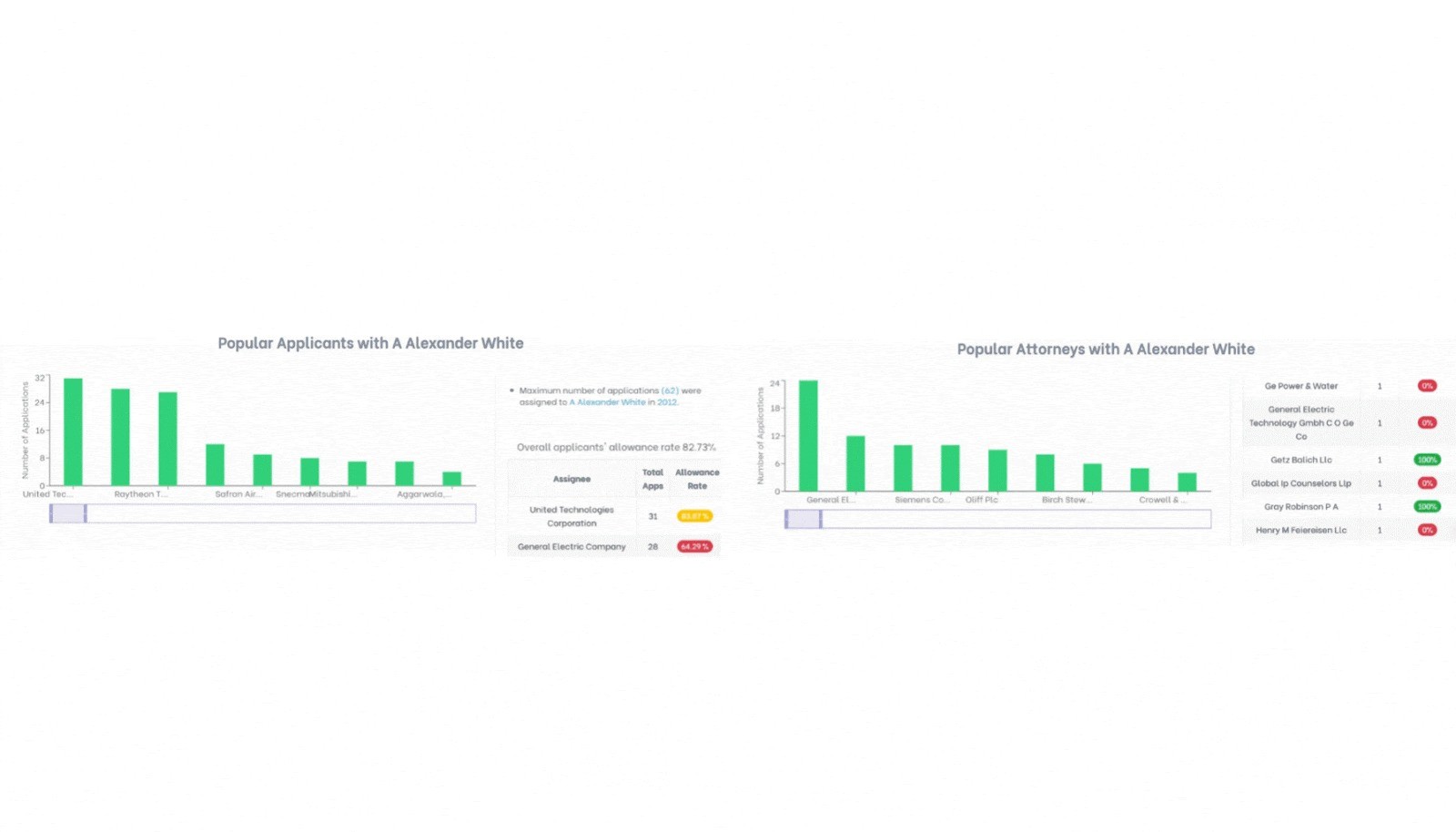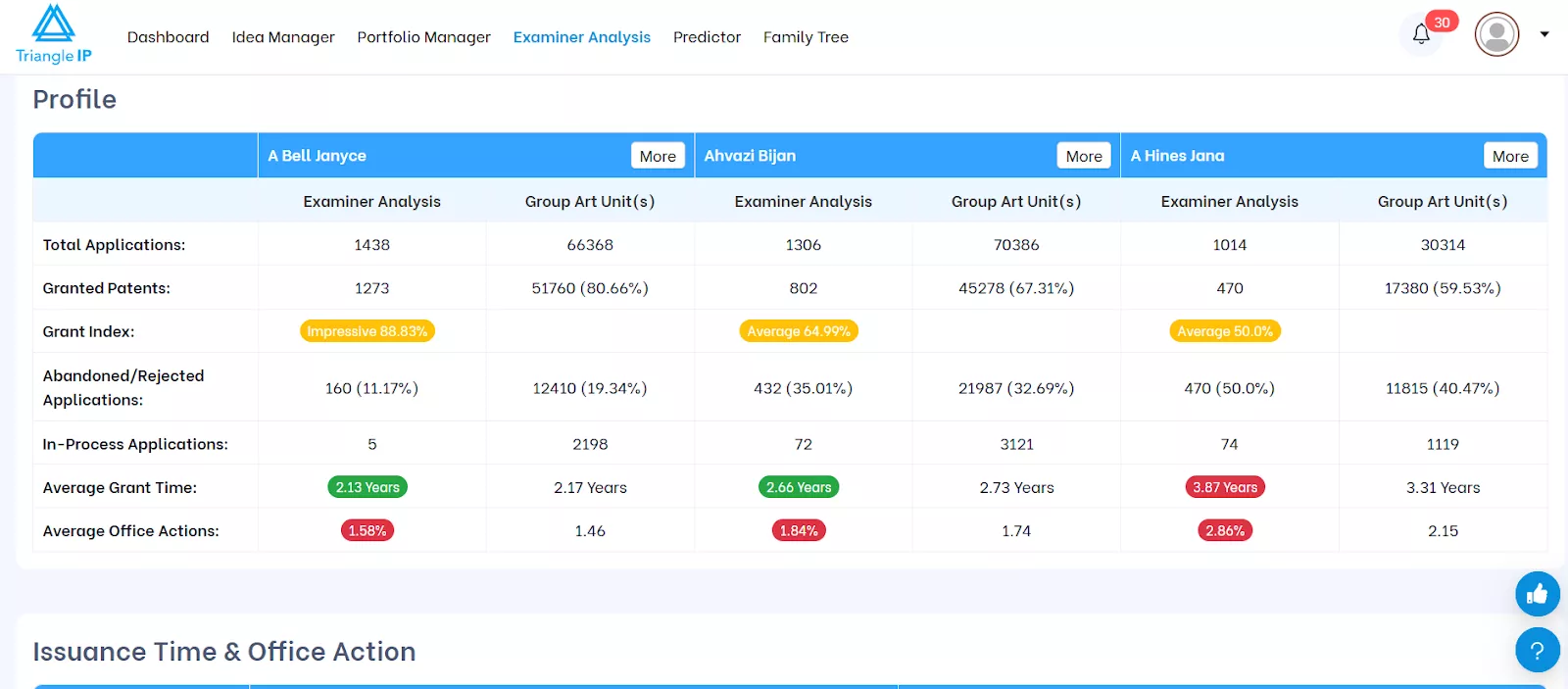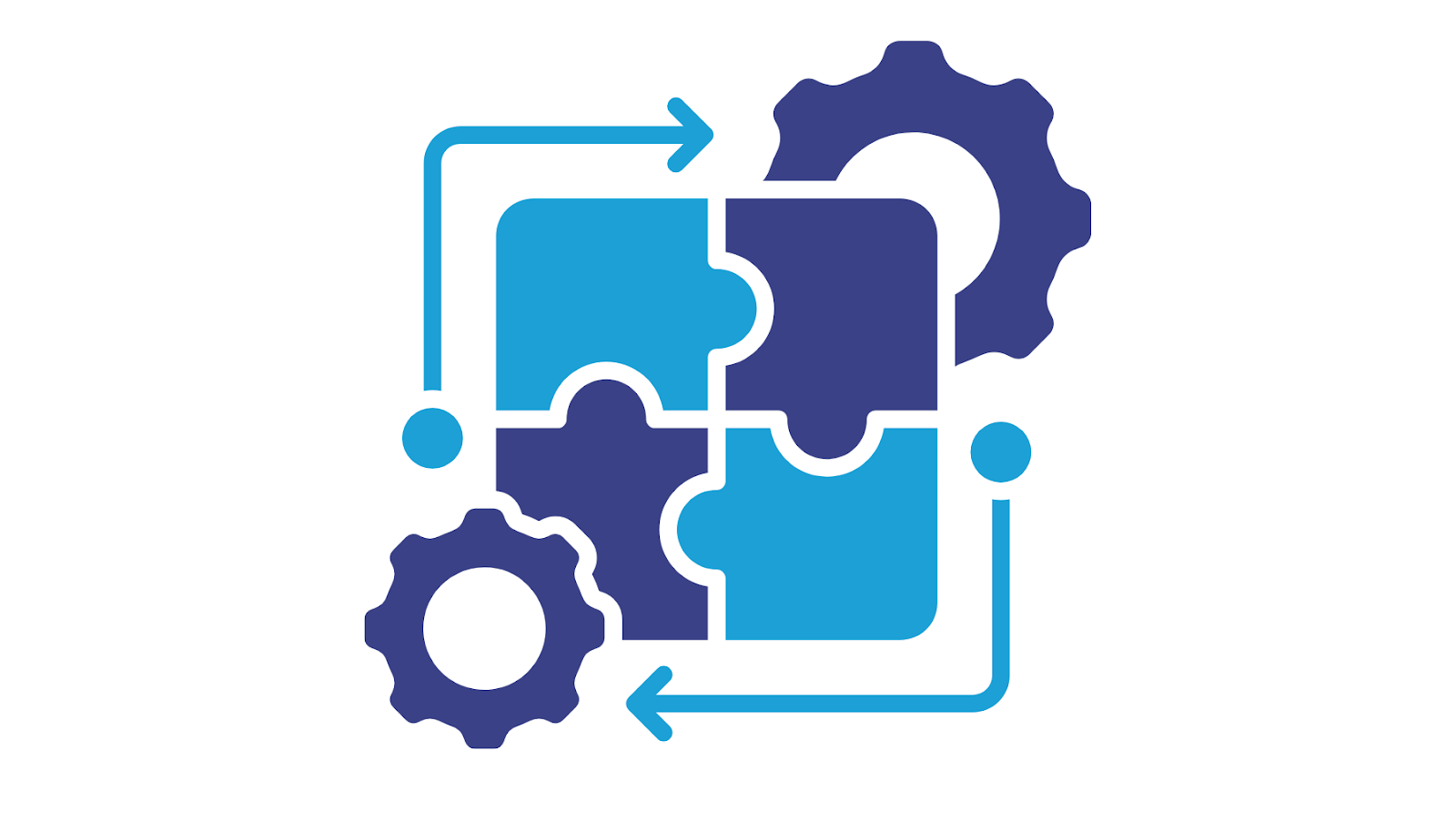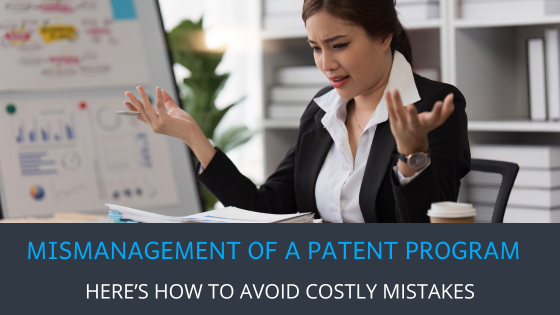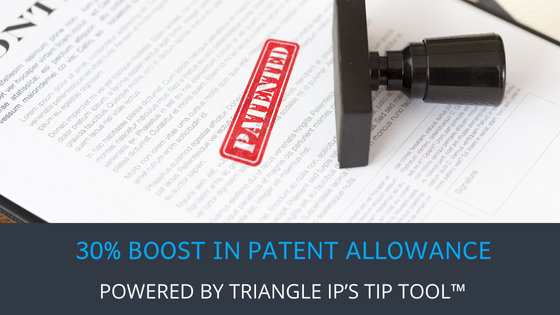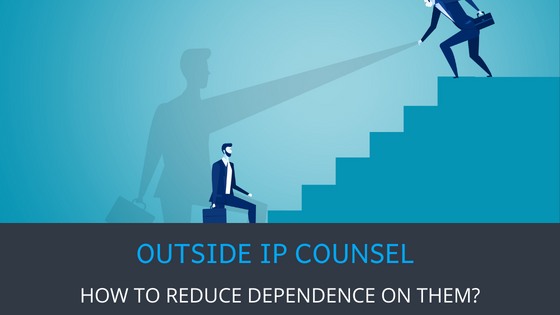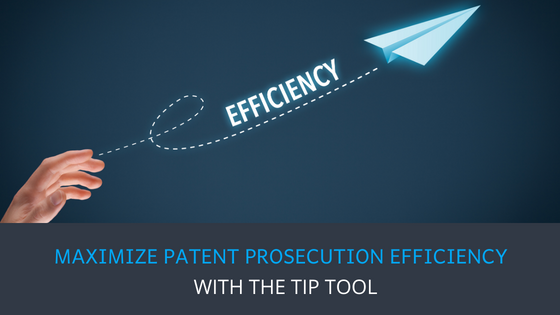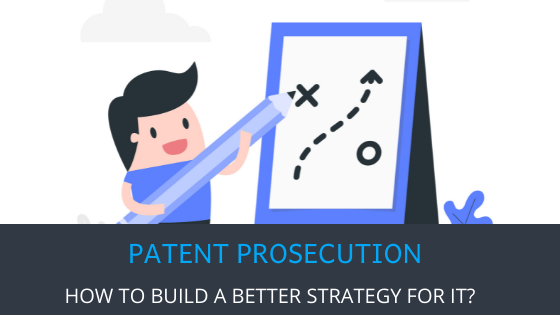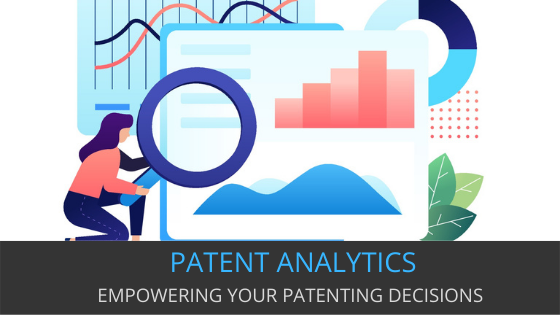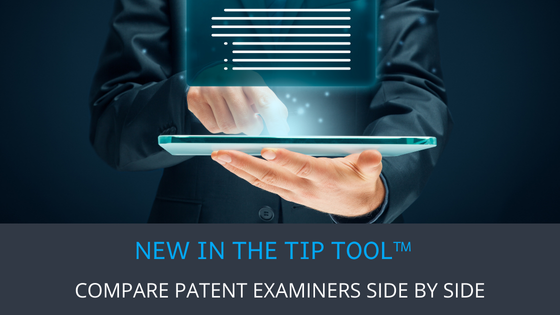
Get Patents Faster and Smarter With Patent Examiner Statistics
Why Patent Examiner Statistics Matters
Negotiation with examiners shape the cost, speed, and outcome of your patent applications.
If your team doesn’t know how an examiner works, you risk:
Rising prosecution costs
from extra office actions, repeated RCEs, and appeals that could have been avoided
Product launch delays
when your examiner’s average time to allowance runs much longer than expected
Ineffective responses
because your team doesn’t see what usually works with this examiner: argument, amendment, interview, or appeal
Weaker portfolios
by missing examiner patterns across related cases that could have guided better filing and continuation strategy
Why You Must Use Triangle IP’s Patent Examiner Analysis Tool?
View Examiners’ Complete Profile
With one click, see how your examiner handles cases: grant rates, office actions, timelines, pending cases, all organized into a clear profile. No spreadsheets, no manual searching. Just instant clarity.
Filter Examiner Data Your Way
With Advanced Search, you control the view. Set filing or grant date ranges, limit to recent activity, focus on specific Group Art Units, or filter by case status.
See How Appeals Play Out
Appeals and RCEs can drain years and budgets if they don’t work with your examiner. Examiner Analysis shows how often appeals succeed, how pre-appeal briefs are handled, and whether RCEs usually lead to allowance or just more office actions.
Benchmark Against Frequent Filers
See which companies and attorneys most often face your examiner and how they perform. This context shows whether your examiner is tough across the board or more lenient with certain filers, helping you set expectations and shape your approach with better insight.
Compare Multiple Examiners Side-by-Side
Now you can line up up to three examiners and see how they compare across allowance rates, office actions, abandonments, RCEs, appeals, and timelines. With side-by-side benchmarking, you know who’s likely to be tougher and where to focus your resources.
Connect Insights to Your Portfolio
Examiner Analysis shows you how each examiner behaves. Portfolio Manager helps you apply those insights across your cases to balance risk, control costs, and strengthen your portfolio.
See Everything About Your Examiner With Just a Few Clicks
How Does Triangle IP’s Patent Examiner Analysis Tool Work?
Register on the TIP Tool™
Sign up here to create your free account.
Go to Examiner Analysis
From the main menu, select Examiner Analysis.
Search for an Examiner
Use the search bar to find your examiner by name
View Examiner Trends
See allowance rates, office actions, timelines, RCEs, appeals, and more—through clear charts, graphs, and pattern trees.
Affordable Pricing. Powerful Insights.
Examiner Analysis is built into Triangle IP’s TIP Tool™ — available in the full package or as a standalone add-on.
It works seamlessly alongside portfolio management and other patent management features.
Start free with the TIP Tool’s freemium plan, or upgrade to unlock advanced insights that give your team the edge in prosecution.
More Tools to Power Your Patent Prosecution
Trusted by many patent professionals across the USA to streamline the patent process.
⭐⭐⭐⭐⭐
A Family Tree View for Every Perspective
Get a crystal-clear view of parent, continuation, divisional, and foreign counterparts. Intuitive symbols and color-coded legends make it easy to spot redundancies, identify expansion opportunities, and align portfolio strategy.
Art Unit Predictor
Dodge Tricky Art Units
Triangle IP’s Art Unit Predictor helps you see where your application is likely to land at the USPTO. Refine claims, steer clear of tough art units, and improve your chances of allowance—starting from the idea stage.
Frequently Asked Questions
Who are the Most Difficult Patent Examiners?
Some patent examiners are significantly harder to work with than others. They have exceptionally low allowance rates. These examiners often issue more rejections, require more rounds of prosecution, and are less likely to allow claims without substantial narrowing.
Using data from Triangle IP’s Examiner Analysis Tool, we identified several examiners with allowance rates below 10%, which is far lower than both their Art Unit averages and the USPTO average (78.03%). These are clear indicators of challenging prosecution ahead.
Examples of examiners with the lowest allowance rates:
Examiner | Allowance Rate |
A. Janice Mooneyham | 1.64% |
Mathew Richard Syrowik | 3.47% |
J. Jonathan Whitaker | 5.49% |
Kevin Worrell | 7.24% |
Henry M. Rodney | 7.21% |
Being assigned to such examiners often leads to a longer, more expensive prosecution. Here’s how you can build a better strategy to handle it.
How to Ace a Patent Examiner Interview?
Acing a patent examiner interview comes down to three things: preparation, timing, and understanding your examiner’s behavior. Before the interview, use tools like the Examiner Analysis feature in Triangle IP’s TIP Tool™ to review data such as:
- How often the examiner allows applications after interviews
- Their average number of office actions per case
- Overall allowance rate
This helps you tailor your approach. For example, if the examiner has a low allowance rate, focus on resolving key objections rather than defending every detail. If interviews often lead to allowances, come prepared to negotiate amendments confidently.
My Patent Examiner Has a Very Low Allowance Rate, What Should I Do Now?
A low-allowance examiner isn’t a dead end. Rather, it’s a data signal that demands a refined prosecution strategy. The key is to adapt, not react.
Start by analyzing the examiner’s behavior using Triangle IP’s Examiner Analysis Tool. Identify their average number of office actions before allowance, frequency of RCEs, and success rate after interviews. This data tells you what typically works with that examiner and what doesn’t.
When Should One File a Request for Continued Examination?
Filing a Request for Continued Examination (RCE) should never be a reflex; it should be a strategic decision grounded in data. The goal is to determine whether further prosecution under the same examiner meaningfully improves your chances of allowance — or simply extends cost and delay.
Start by consulting the Examiner Analysis Tool in Triangle IP’s TIP Tool™. Look closely at your examiner’s post-RCE allowance rate, average number of RCEs before allowance, and typical prosecution length. These data points are critical for understanding whether an RCE is worth the investment.
How Much Budget Do We Risk Wasting if We Don’t Anticipate Examiner Behavior?
A lot more than most teams realize.
When examiner behavior isn’t factored into your prosecution strategy, costs can quickly spiral. Examiners with low allowance rates or a pattern of multiple office actions often lead to repeated rejections, RCEs, and unnecessary delays. Each extra round of prosecution means more attorney hours, higher USPTO fees, and added internal review time.
In many cases, this results in $10,000 to $20,000 in additional costs per application—sometimes more in complex filings.
Without early insight, teams often find themselves reacting late to fighting rejections that could have been avoided or budgeting too little for what turns into a prolonged process. This misalignment is one of the key reasons patent programs go over budget, as outlined in strategies for IP budget allocation and controlling patent costs.
By contrast, when examiner behavior is analyzed upfront before drafting responses or planning amendments, your team can set more realistic budgets, reduce unnecessary filings, and focus on patents with a stronger path to allowance.
In short, ignoring examiner behavior can lead to significant budget waste, while anticipating it enables smarter, more efficient prosecution.





